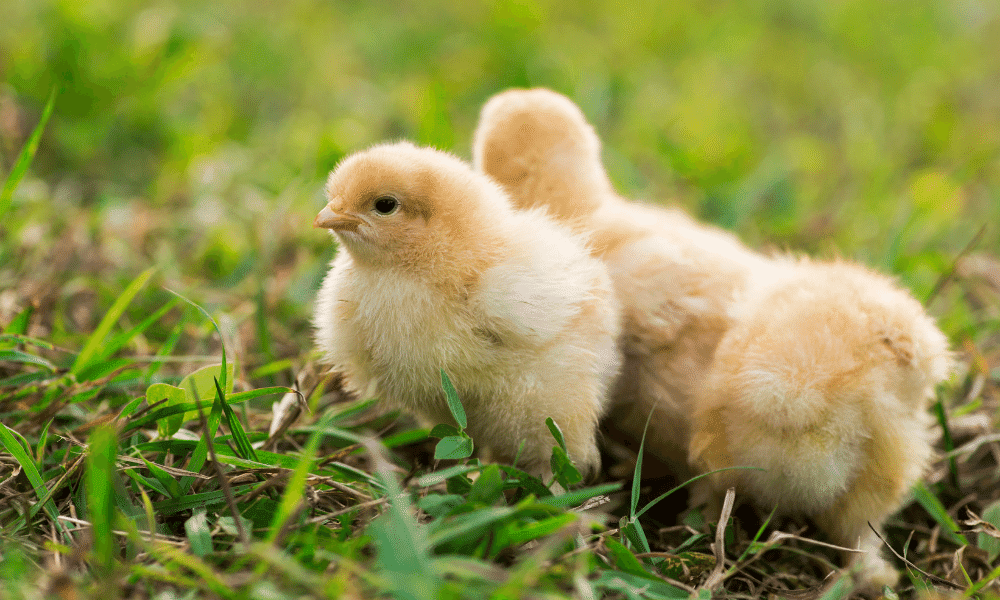Avian Flu Insights: Symptoms, Transmission, and Prevention
Avian Flu, also referred to as bird flu, is a viral infection that primarily affects birds. In certain circumstances, it can also infect other animals, including humans. This blog provides an overview of avian flu, including general information about its symptoms, transmission, diagnosis, and control measures, based on publicly available information and guidelines.
What is Avian Flu?
Avian Flu is caused by influenza viruses that predominantly infect birds. One of the most notable strains, H5N1, has been associated with severe illness in both birds and, in rare cases, humans. The virus can spread through direct contact with infected birds, their droppings, or contaminated surfaces and materials. Efforts to understand and monitor avian flu help manage outbreaks and mitigate risks to animal and human health.
Avian Flu Mortality
Certain strains of avian flu, such as H5N1, have been linked to high mortality rates in poultry, often resulting in substantial flock losses. While human infections are rare, they can lead to severe illness and, in some cases, fatalities, particularly in individuals who have had direct exposure to infected birds. Detection and control measures, as recommended by veterinary and public health authorities, are crucial for reducing risks and impacts on affected populations.
Avian Flu Symptoms
Avian Bird Flu in Chickens and Other Animals
Avian flu can cause a range of symptoms in chickens and other birds, which may include lethargy, reduced appetite, respiratory distress, and a sudden decline in egg production. In severe cases, particularly with highly pathogenic strains, the disease can lead to high mortality rates in affected flocks. The virus spreads through direct contact with infected birds or contaminated equipment and environments.
Signs of Avian Flu in Birds
Avian flu symptoms in chickens can vary but often include:
Sudden death
Lack of energy
Decreased egg production
Swelling of the head, neck, and eyes
Coughing and sneezing
Diarrhea
Other animals, such as ducks and turkeys, may exhibit similar symptoms.
Avian Flu in Humans
Avian flu in humans is typically contracted through direct contact with infected birds or their droppings. While rare, there have been concerns about avian flu human-to-human transmission, especially with certain strains like H5N1. Monitoring and controlling outbreaks are crucial to preventing the virus from spreading more widely among humans. Avian flu human symptoms can range from mild to severe and may include:
Fever
Cough
Sore throat
Muscle aches
Eye infections
Severe respiratory illness
Difference between Swine flu vs Avian flu
Swine flu (e.g., the 2009 H1N1 pandemic) spreads more easily among humans than avian flu, which typically requires direct contact with infected birds. While both viruses can cause significant outbreaks, swine flu has shown a greater capacity for sustained human-to-human transmission, as seen during the H1N1 pandemic.
Avian Flu in Cows
Avian influenza primarily affects birds and rarely infects mammals. There is no significant evidence of cows being affected by avian flu. Preventative measures on mixed-species farms focus on separating poultry from livestock to avoid cross-species contamination.
Avian Flu In Dogs and Cats
Avian flu in dogs is extremely rare, but there have been isolated cases where dogs have contracted the avian influenza virus, primarily through direct contact with infected birds or contaminated environments. On the other hand, avian flu in cats is also a rare but concerning phenomenon, as felines can become infected with the avian influenza virus. Particularly the H5N1 subtype, through direct contact with infected birds or their environments. Pet owners should be vigilant and prevent their pets from hunting or interacting with wild birds, especially in areas where avian flu outbreaks have been reported. If your pet shows signs of illness after exposure to potentially infected birds, it is crucial to seek veterinary care promptly to ensure proper diagnosis and treatment.
While rare, avian flu can also affect pets. Avian flu symptoms in dogs and symptoms of Avian flu in cats may include:
Respiratory distress
Coughing
Fever
Lethargy
Marketplace
You might also be interested in...

Shop for chickens, livestock or other farm goods

About Farm Expo Events

Sell Your Chicks and Eggs
How to Diagnose Avian Flu
Diagnosing avian flu involves several steps:
Clinical Examination: Observing symptoms in birds or animals.
Laboratory Testing: Tests such as PCR (Polymerase Chain Reaction) are conducted to detect the virus.
Serological Tests: Checking for antibodies in the blood.
If you suspect avian flu in your flock or pets, consult a veterinarian immediately.
Avian Flu Treatment
Isolation: Infected animals and humans should be isolated to prevent the spread.
Antiviral Medication: Tamiflu (oseltamivir) is often used to treat humans.
Supportive Care: Hydration and oxygen therapy may be necessary for severe cases.
Veterinary Care: Vaccines for birds, such as the avian bird flu vaccine, are available in some regions.
Avian Flu News in the US
Avian flu latest news As of 2024, avian flu continues to be a concern globally. The CDC avian flu updates indicate ongoing monitoring and response efforts. Recent avian flu news highlights outbreaks in various states, including Iowa, California, and Ohio. Countries like Australia and Canada are also reporting cases, emphasizing the need for vigilance.
While Johns Hopkins University does not currently offer a dedicated avian flu map, the term "John Hopkins avian flu map" is often used to refer to various resources for tracking avian influenza. The Johns Hopkins Center for Health Security provides situation updates and risk assessments related to avian influenza. This center is a key resource for understanding the current landscape of avian flu and its potential impacts on public health.
Additionally, the Johns Hopkins ABX Guide offers detailed information on avian influenza, including symptoms, treatment, and prevention. For visual representations and tracking of avian influenza outbreaks, the U.S. Geological Survey (USGS) provides a distribution map of highly pathogenic avian influenza in North America. Furthermore, the Centers for Disease Control and Prevention (Avian Flu CDC) offers a map detailing reported H5N1 bird flu detections in U.S. backyard and commercial poultry.
These resources include situation updates, risk assessments, and detailed information on avian influenza. They are regularly updated to reflect the latest information on avian influenza outbreaks. These tools can serve as valuable resources for monitoring the situation and are often referenced alongside the concept of the Johns Hopkins avian flu map.
Avian Flu and Eggs
“Recent bird flu outbreaks have significantly reduced the supply of laying hens in the U.S., leading to record-high wholesale egg prices.” - Reuters
Avian flu in eggs refers to the eggs produced by birds infected with the avian influenza virus. While the primary concern with avian flu is the health of the birds and the potential for transmission to humans, there is also a focus on the safety of poultry products, including eggs. Infected birds may lay avian flu eggs that can carry the virus, but the risk of transmission through properly cooked eggs is extremely low. Cooking eggs to the appropriate temperature effectively kills the virus, making them safe for consumption. However, it is essential for producers to follow strict biosecurity measures to prevent the spread of avian influenza within flocks and to ensure that eggs are collected and handled safely. Consumers should also be aware of the importance of purchasing eggs from reputable sources to minimize any potential risks associated with avian flu.
In 2022, avian flu outbreaks in the USA caused egg prices to skyrocket due to reduced supply. States like Iowa and California were particularly affected. avian flu and egg prices 2022 USA
Avian Flu in Milk
“The U.S. federal government has issued an order requiring mandatory bird flu testing for the national milk supply in response to the virus’s rapid spread among dairy herds.” - Reuters
Recent studies have detected the presence of the H5N1 avian influenza virus in dairy cattle and their raw milk. The virus has been found to survive in raw milk under refrigerated conditions for extended periods. However, standard pasteurization processes are reported to effectively inactivate the H5N1 virus, rendering pasteurized milk safe for consumption.
It is reported that consuming unpasteurized (raw) milk poses a higher risk of exposure to avian influenza and other pathogens. Health authorities, including the Centers for Disease Control and Prevention (CDC), advise against the consumption of raw milk due to these potential health risks.
To mitigate the risk of avian influenza transmission through dairy products, it is essential to adhere to proper hygiene and processing practices, including pasteurization. Milk from healthy, uninfected animals that has undergone pasteurization remains safe for consumption. Implementing stringent biosecurity measures on farms further helps prevent the introduction and spread of the virus within dairy herds.
Avian Flu Preperations
Farms and Livestock
Effective preparation for avian flu outbreaks on farms involves implementing biosecurity measures to reduce the risk of infection among livestock. Recommended practices include:
Controlling access to poultry areas to minimize contact with external sources of infection.
Using protective clothing and disinfecting equipment and vehicles regularly to prevent cross-contamination.
Monitoring flocks for symptoms of avian flu, such as respiratory distress, lethargy, or decreased egg production.
Reporting unusual deaths or signs of illness to veterinary authorities for immediate investigation and action.
Keeping poultry separated from wild birds and maintaining proper ventilation in housing to limit exposure.
Vaccination of poultry may be an option in some regions, depending on local regulations and the availability of vaccines. Farmers are encouraged to consult with veterinary professionals for tailored recommendations based on their specific operations.
Individuals
Public health authorities recommend that individuals take the following precautions to reduce the risk of avian flu infection:
Stay informed about the symptoms of avian flu, which may include fever, respiratory distress, or muscle aches, and seek medical advice promptly if symptoms develop after exposure to potentially infected birds.
Practice good hygiene, such as frequent handwashing with soap and water, and avoid direct contact with sick or dead birds.
Follow public health advisories, including any recommendations for vaccination, as updates become available.
Schools and Community Institutions
Schools and other community institutions can take measures to protect students, staff, and visitors from potential avian flu exposure. Suggested precautions include:
Developing emergency response plans in collaboration with local health authorities to outline protocols for monitoring, reporting, and managing suspected cases.
Educating staff, students, and families about avian flu symptoms and hygiene practices, such as regular handwashing and proper respiratory etiquette.
Increasing cleaning and disinfection of high-touch surfaces and areas that may be frequented by birds.
Maintaining open communication with local health authorities to stay updated on public health guidance and outbreak status.
These strategies are based on guidelines from health and veterinary organizations and are designed to minimize the risk of avian flu transmission in various settings.
Top Avian Flu Questions
-
Avian flu, or avian influenza, is a highly contagious viral infection that primarily affects birds, especially poultry and wild waterfowl. Certain strains, such as H5N1 and H7N9, can infect other animals and occasionally humans, typically through direct exposure to infected birds or their environments. While most strains pose little risk to humans, some are zoonotic, meaning they can jump species, raising public health concerns.
-
Yes, dogs can contract Avian Flu, but it is extremely rare. Most cases occur when dogs have direct contact with infected birds, their droppings, or contaminated environments. While infections are uncommon, symptoms in dogs may include fever, respiratory distress, and lethargy. To minimize the risk, keep dogs away from wild or sick birds, especially during outbreaks.
-
Yes, cats can become infected with Avian Flu, especially after close contact with infected birds or consuming raw meat from infected poultry. Cats infected with certain strains, like H5N1, may exhibit symptoms such as breathing difficulties, lethargy, or loss of appetite. Although rare, outbreaks in domestic and wild cats highlight the importance of keeping pets away from potentially infected birds.
-
Yes, vaccines are available for poultry to help control the spread of Avian Flu among birds. For humans, while no universal Avian Flu vaccine currently exists, it is reported that researchers are actively developing and testing vaccines.
-
Properly cooked eggs are safe to eat, as the high temperatures used in cooking destroy the Avian Flu virus. However, eggs from infected birds should not be consumed raw or undercooked. Producers and consumers should handle eggs with care, ensuring hygiene and thorough cooking to eliminate any risk.
-
Chickens infected with Avian Flu often show symptoms such as respiratory distress (coughing and sneezing), lethargy, decreased appetite, and a significant drop in egg production. Other signs may include swelling of the head, neck, or eyes and discolored wattles or combs. In severe cases, sudden death can occur, especially in highly pathogenic strains.
-
Avian Flu spreads primarily through direct contact with infected birds, their droppings, or contaminated materials such as feed, water, and equipment. It can also spread indirectly via dust, feathers, or aerosols containing the virus, particularly in crowded environments like poultry farms. Migratory wild birds are a key factor in transmitting the virus across regions.
-
The incubation period for Avian Flu in humans typically ranges from 1 to 7 days after exposure, depending on the strain. During this time, infected individuals may not show symptoms but can already harbor the virus, making early diagnosis and monitoring critical in controlling outbreaks.
-
In birds, outbreaks can persist for weeks, especially if biosecurity measures are not implemented. The virus can remain in the environment for extended periods, depending on temperature and sanitation conditions.
-
Avian Flu is believed to have originated in wild aquatic birds, such as ducks and geese, which act as natural reservoirs for the virus. Historical records trace its presence back to the late 1800s. These wild birds can carry the virus without symptoms and spread it to other species, including domestic poultry, through migration and shared water sources.
-
To prevent avian flu in chickens, maintain strict biosecurity measures and separate poultry from wild birds. Monitor flock health consistently. Practice good hygiene and provide proper housing.
-
Testing for avian flu in humans typically involves a PCR (polymerase chain reaction) test or viral culture to detect the presence of the virus in respiratory samples, such as throat or nasal swabs.
-
Yes, avian influenza can spread through the air, but typically only over short distances. The virus is carried in respiratory droplets or dust particles contaminated with infected birds’ saliva, nasal secretions, or feces. Transmission often occurs in environments with close contact between birds or in areas with poor ventilation.
-
Avian influenza can be deadly, especially to birds. In poultry, certain strains like H5N1 and H5N8 cause severe illness and have high mortality rates. In humans, the severity varies by strain. Some, like H5N1, have caused severe respiratory illness and fatalities, but human cases remain rare.
-
Avian influenza has been around for centuries, but the modern understanding of the virus began in the early 20th century. The H5N1 strain, which raised significant global concern, was first identified in geese in China in 1996. Outbreaks have since occurred sporadically worldwide.
-
Avian flu can occur anywhere in the world but is most commonly reported in regions with dense poultry farming. Outbreaks often emerge in Asia, Africa, and Europe, but migratory wild birds can spread the virus to other areas, leading to localized outbreaks.
-
Most human infections result from direct contact with infected birds or contaminated environments. However, scientists monitor the virus closely to detect any changes that could increase human-to-human transmission risks.
-
While dogs are not typical hosts for avian influenza, there have been rare cases reported where dogs were infected after consuming raw poultry or being exposed to infected birds. It’s important to keep pets away from sick birds or areas with known outbreaks.
You might also be interested in…













Discover farmers markets near you with Roobeez! Explore local events, find seasonal and weekly markets, and shop fresh produce and handmade goods on our marketplace. Contribute to our growing directory by adding your favorite markets and community events. Supporting local has never been easier!